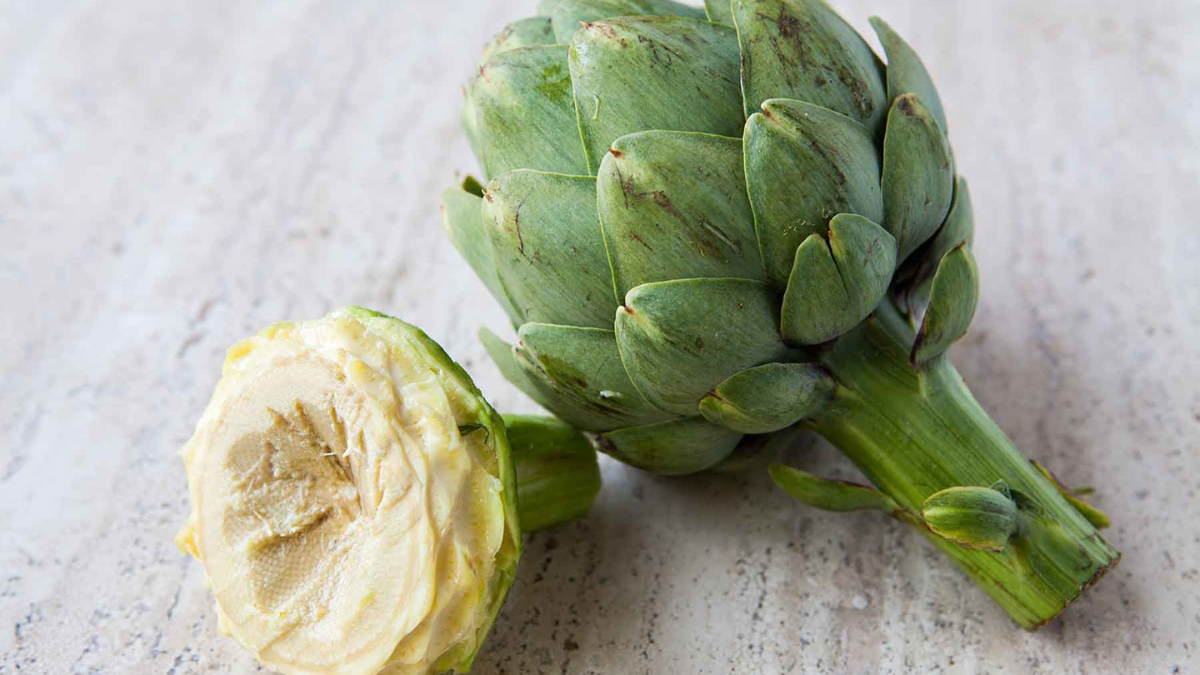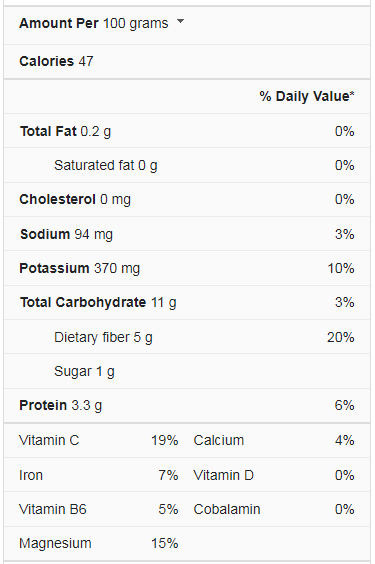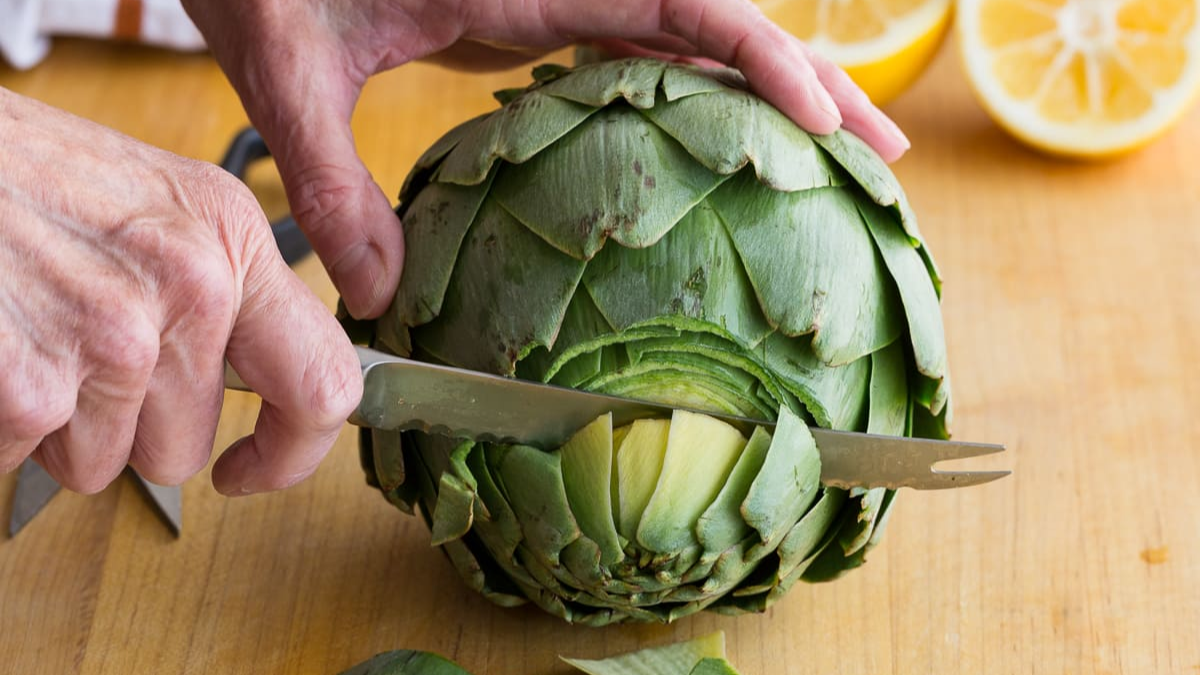Artichokes require more effort to prepare and consume than other vegetables, and their leaves feature thorny points that must be removed before eating. But these delicious, high-fiber vegetables offer significant health advantages and should be a regular part of your supper menu. Artichokes come in various ways: fresh, tinned, marinated, and incredibly nutrient-dense. To know about artichoke nutrition facts, read further.
The artichokes sold at supermarkets and farmers’ markets are spherical and have prickly leaves. Artichokes are a wonderful complement to dips and sauces when steamed because of their soft texture and sweet, earthy flavor, but they are also the ideal standalone snack. The Mediterranean region is the artichoke’s native habitat. Even though the artichoke industry is now primarily focused in California, artichoke plants continue to grow all over the Mediterranean. Fresh artichokes are most frequently found when the plant is in season between February and June or September and December.
Artichoke Nutrition Facts
What is Artichoke?
The young bloom bud of a thistle is an artichoke. It is considered a vegetable in cuisine and is consumed as such. The plant, an aster, is plucked for its buds rather than its flowers. It takes some effort to get to the edible sections of an artichoke, making it a difficult vegetable to prepare. The tips of the bud’s outer leaves, or “bracts,” are thorny (thornless varieties have been cultivated). The innermost leaves are also sensitive enough to consume, as are the leaf bases. The stem is next, followed by the choke (the hairy core) on top of the heart. The meatiest portion of an artichoke is its heart, while the center of the stem is also edible. Unless it’s a baby artichoke, the choke is often not eaten.
The artichoke, a Mediterranean native, is regarded as one of humanity’s first edibles and has even been mentioned in Greek mythology. It may be found in the United States and is largely grown in California. Castroville, known as the “Artichoke Center of the World,” provides more than 80% of the domestic harvest. The rest of the world receives its food from the harvests of France, Italy, and Spain. The price of artichokes on the market is not the lowest.
What does Artichoke Taste Like?
The flavor of artichokes is earthy with hints of herb. The artichoke’s center is considerably softer and has a more potent flavor than the petals, which have a crisp texture. By far the most desirable component, their hearts are sold separately from the rest of the artichoke.
Artichokes retain a significantly harder texture and a bitter flavor when consumed uncooked. The texture and flavor are softened and blended while cooking, making it resemble boiled potatoes.
Whether you like, artichokes depend on their taste; they have a mild nutty flavor comparable to brussels sprouts and asparagus. People also liken them to celery and celeriac due to their texture and flavor.
Various artichoke varieties have also been said to taste similar to turnips.
Artichokes are a great addition to many meals because their flavor is generally not overbearing and works nicely with various cooking techniques.
What are the Health Benefits of Artichoke?
Thanks to their fiber, micronutrient, and antioxidant content, artichokes may help promote health and prevent some diseases and conditions.
Supports Heart Health
Nearly one-third of your daily fiber requirements are met by one medium artichoke’s 7 grams of fiber. Reduced risk of coronary heart disease, stroke, and hypertension are just a few of the many health advantages of fiber. Potassium, a mineral that may help decrease blood pressure, is another mineral that is abundant in artichokes. 343 milligrams of potassium are present in a medium artichoke (for reference, a similarly sized banana has 422 milligrams).
May Lower Cholesterol Levels
By reducing cholesterol levels, artichokes may potentially benefit heart health. This effect is aided by fiber and some of the artichokes’ antioxidants. Studies on artichoke leaf extract have revealed that it lowers triglycerides, LDL (“bad”) cholesterol, and total cholesterol.
May Improve Liver Health
Cynarin and silymarin are two of the most potent phytonutrients found in artichokes. These have powerfully advantageous effects on the liver, aiding in its toxin removal.
Fights Effects of Aging
Artichokes are rich in antioxidants, especially vitamin C, which the body uses to fight inflammation and oxidative damage. Numerous chronic diseases and age-related illnesses include these pathways. Additionally, vitamin C aids immune system health and cell repair. Another 2018 study described the “anti-age benefits” that chemicals in artichoke have on the skin.
May Boost Metabolism
Magnesium and manganese are both abundant in artichokes and may be necessary components of the body’s metabolic activities. Magnesium helps the body absorb calcium more efficiently, strengthening bones even more. It is also essential for protein production throughout the body. Manganese affects the metabolism of cholesterol, amino acids, and carbohydrates, and it is significantly more involved than magnesium.
May Help Fight Cancer
Artichokes may have anti-carcinogenic qualities, according to research. The polyphenols—beneficial plant components with antioxidant properties—in artichokes were shown to inhibit the growth of breast cancer cells in a 2015 study conducted on cancer cells in test tubes, not on actual people. Similar outcomes were discovered in mesothelioma in a 2015 investigation.
How do you Add Artichokes to your Diet?
Although artichokes can be scary due to their unusual appearance, they are quite simple to prepare. Don’t be afraid to pick one up, whether at a farmer’s market or your neighborhood grocery shop, advises Shah. It’s not a significant expenditure or too demanding if you purchase one.
When you get home, adhere to Shah’s three simple recommendations: With a lemon, salt, and a couple of garlic cloves, bring a saucepan of water to a boil. The artichoke should be washed, and the pointed top should be cut off with a knife; the spiky points on each leaf should be trimmed so they are all flat, and it should be placed in a steaming basket in the hot pot for around 25 to 30 minutes.
Then, Shah continues, “grab your preferred dip; I don’t care if it’s aioli, mustard, Ranch, or melted butter; pour it over the artichoke. Use your teeth to scrape and consume each leaf’s soft, fleshy underside as you peel it off one at a time.
Eat mindfully and savor your meal. It takes some time, but it also helps you slow down how quickly you consume. You can connect with a lot when you’re eating if you’re conscious because there is so much texture—the leaf is a little tough, and the inside is sweet and soft.
Artichoke vs. Jerusalem Artichoke
Despite having the same name, Jerusalem artichoke (also known as sunchoke) and artichoke are not closely related. Despite splitting from the aster family, both plants are asters. The cardoon is a member of the same genus as the artichoke, Cynara. The Jerusalem artichoke is a sunflower species member of the Helianthus genus. In addition, the tuber of a Jerusalem artichoke is what we eat (or root). It has a texture similar to potatoes and can be either raw or cooked. It tastes like sweet, crunchy chestnuts.
Where to Buy Artichoke?
The most popular artichoke in the US is the global variety. While most areas provide it all year long, the primary season is from March through May, and the second season runs in October and November. Given the effort required to get the small heart inside, fresh artichokes can appear costly, which is understandable. In the vegetable department, it is normally sold individually unwrapped; occasionally, bulk discounts are available.
In a garden, artichoke plants can be grown as an annual in colder climates and as a perennial in hotter climates. They need water, excellent drainage, and sunlight to develop flowers.
When buying artichokes, look for globes with a tight leaf formation that are a rich green color. For the size, it ought to feel weighty. Although size is a matter of preference and has little to do with taste or quality, keep in mind that larger artichokes will take longer to cook. One plant can yield up to 30 chokes of various sizes; a little artichoke is simply a smaller bud.
Pressing the leaves together is a wonderful way to check their freshness. You’ll hear a squeaking sound if it’s new. A spongy artichoke has exceptionally rigid outer leaves or spreads out its leaves is old or overmature. Although browning of the tips might be a sign of aging, it can also be caused by frost damage. Old and dry artichokes should be avoided, while those with a little frostbite on the tips are frequently regarded as the tastiest.
How to Prepare Artichoke?
It could seem not very comforting if you’ve never prepared fresh artichokes before, but once you get the hang of it, it’s simple. After cleaning the artichoke, remove the stem. Steam the artichoke for 30 to 40 minutes after slightly opening the petals.
You have a few different ways to enjoy your artichoke after it has been steamed. Some prefer to remove the artichoke’s petals and solely consume the “heart” (center). The leaves, on the other hand, contain many of the greatest nutrients. You can take the artichoke leaves off and use your teeth to scrape off the meaty portion to reap the full health benefits.
You may discover recipes online for various seasoning combinations to enhance the flavor of your artichoke leaves. For dips, pasta dishes, and stir-fries, artichokes and artichoke hearts can also be purchased canned or jarred.
Storage Tip
It’s better to utilize artichokes the same day you buy them because you never know how long they’ve been sitting on the grocery store shelf. Fresh artichokes can be stored in the refrigerator for five to seven days if that is not an option. Slice a piece off the stem, wet the cut end, and place it in a plastic bag before keeping it.
Artichokes that will be frozen must first be boiled, and they will become brown when frozen raw, affecting the flavor and texture. A whole cooked artichoke can be frozen for six to eight months if properly drained, wrapped snugly in foil, and stored in plastic freezer bags or airtight containers. Additionally, leftover cooked artichokes can be wrapped in plastic and stored in the refrigerator for up to five days. It can be used again in pasta, taco, and egg preparations.
Conclusion
Although they are sometimes mistaken for vegetables, artichokes are buds that will eventually bloom into a flower. The artichoke eventually blooms into a solitary purple blossom, but the majority are plucked for sustenance before that happens.
The artichokes sold at supermarkets and farmer’s markets are spherical and have prickly leaves. Artichokes are a wonderful complement to dips and sauces when steamed because of their soft texture and sweet, earthy flavor, but they are also the ideal standalone snack.
The Mediterranean region is the artichoke’s native habitat. Even though the artichoke industry now is primarily focused in California, artichoke plants continue to grow all over the Mediterranea.
Because of their abundant antioxidants, artichokes are frequently referred to as superfoods. According to studies, artichokes have several known and conceivable health advantages.



